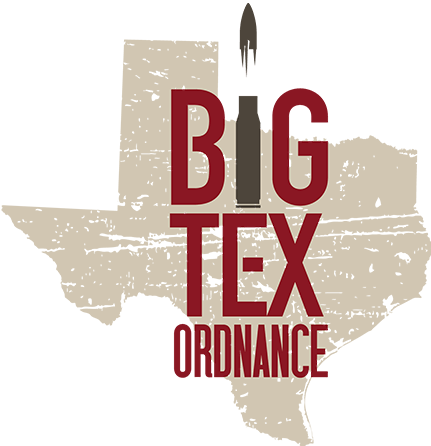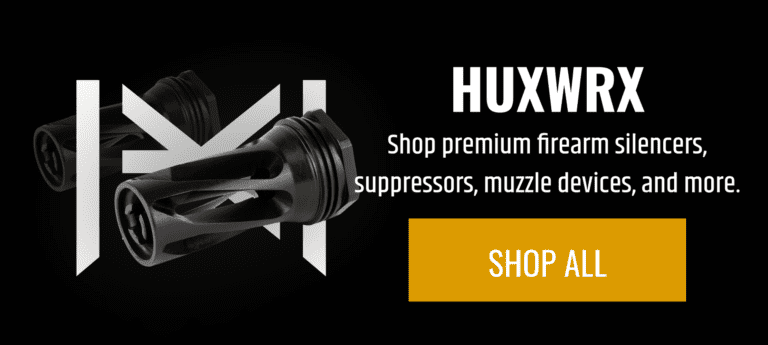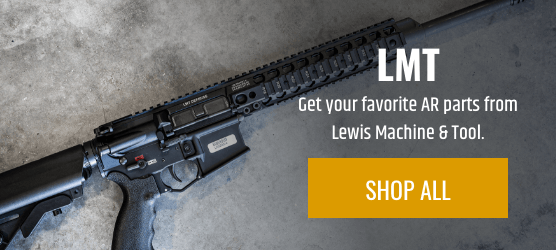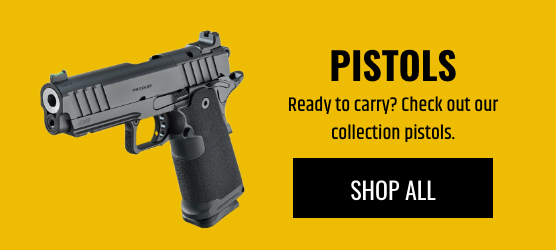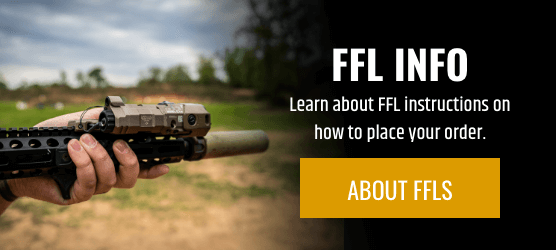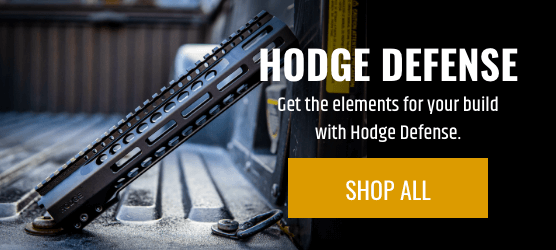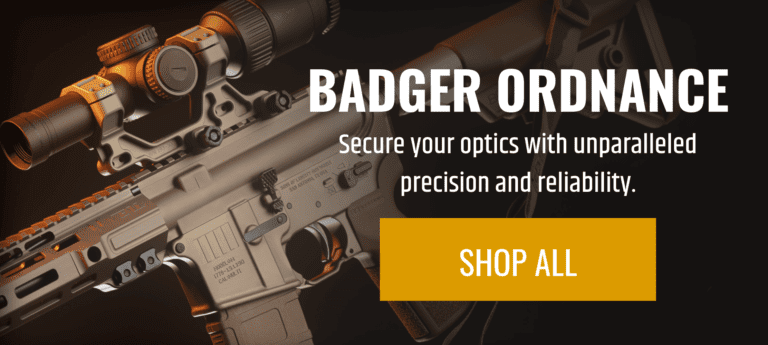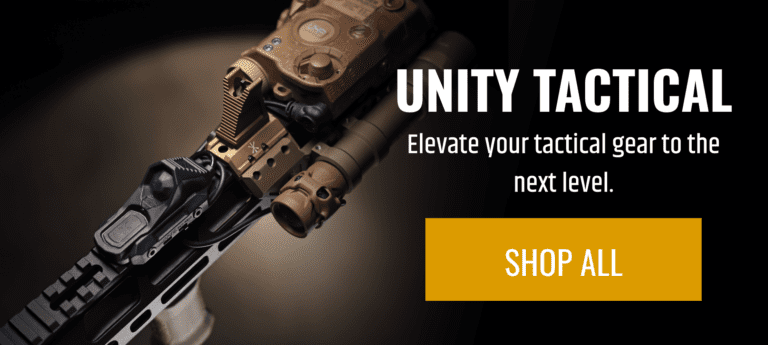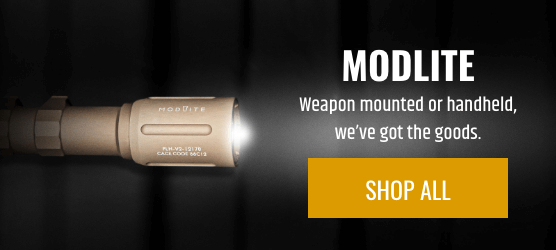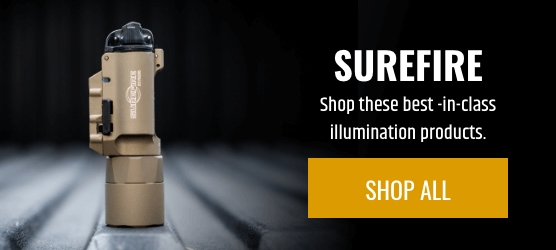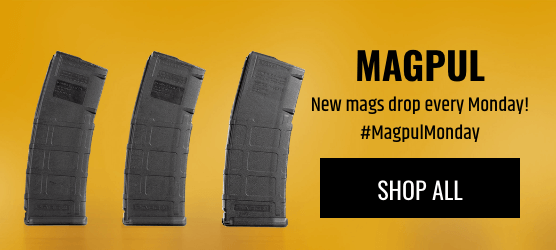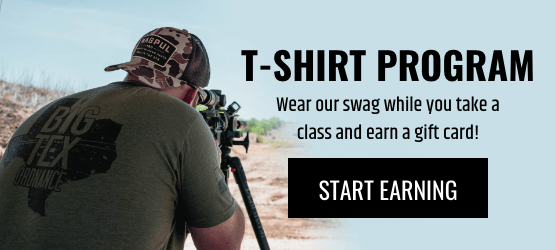

JDC SPEED SHOOTING & SHOT CALLING CLASS AAR
As I’ve progressed as a shooter, I try to tailor the classes that I take to address my particular needs. It’s a little hard to list out my needs, as my shortcomings are myriad, but tightening up my speed while maintaining accuracy is certainly high on my list. When I saw Justified Defensive Concepts’ 2020 schedule, and the Speed Shooting & Shot Calling class on it, I knew I was not going to miss it.
If you want some indication just how much I was not going to miss it, here’s the story. I am writing this AAR from Las Vegas, where I will be attending SHOT Show for the first time. I got home from this class at 11:15 PM on Sunday night – as expected – secured my weapons, went to sleep at 11:30 PM, and woke up at 4:15 AM on Monday to catch a flight to Las Vegas. That is punishing, and I was pretty fatigued on Monday, but I think it was worth it.
Class Title: Justified Defensive Concepts Speed Shooting & Shot Calling Class
Class Description: From the website: “Speed Shooting and Shot Calling is an advanced pistol class focused on enhancing students ability to run their handgun at high speed. 2-Gun National Champion Ken Bloxton has developed a 3-hour, 300rd course that answers some the hardest questions in shooting such as –
- How can I maintain accuracy at high speed?
- What is “Shot Calling” and how do I do it?
- What does it mean to “See what you need to see”?”
Instructors: Ken Bloxton, Brett Harnish, Tim Chandler, Ty Cooper, and Kerry Brendel. All of them have their bios on the JDC website, but I would summarize them as being primarily LEO, with some past military experience. The lead instructor was Ken Bloxton, but Brett also took something of a leadership role. Ken is a high-level multi-gun shooter with some championships under his belt. He also runs Origin Shooting.
The instructor ratio was 1 instructor to 2 students. This is one of the things I really give JDC a lot of credit for; you get a LOT of hands-on time, and the instructors tend to self-organize to have the right instructors on the right students. I was constantly getting coaching from Ken and Brett, and their advice made a measurable impact in my shooting performance.


Justified Defensive Concepts is a new-ish training provider in the northern Virginia area. I believe Brett said that this was their first anniversary. They have a very solid instructor cadre, and I have zero doubts in their ability to teach whatever classes they decide to teach. This is really the golden age of firearms training in the area, and I hope the Virginia legislature doesn’t endanger that.
Location/Date: The class took place on 1/19/2020 from 6-10:30PM. It was conducted at the NRA HQ range. The NRA HQ range is a great indoor range with 50yd shooting lanes, clean bathrooms, and a well-equipped classroom. I have no complaints about the facility, except that the bullet-lead removal augur turns on at about 8PM and makes it rather difficult to hear anything for about ten minutes. Small price to pay.
Equipment Details: I used my standard USPSA competition belt rig for this class. Riding in the holster was a Glock 17 with my Swenson slide and FastFire3 8MOA. Midway through class, I had a squib (read on), and switched over to my Glock 19 with Brownells slide, 3CR Tactical compensator, and Trijicon RMR RM01 Type-2 3.5MOA. This was my first time running the 3CR comp at speed outside of zero and functionality verification, and I was pleasantly surprised at how well it did.
Ammo was my reloads. I knew that one round in them might be a squib due to a prior reloading mishap, and I was not surprised when it happened. I disassembled the gun when it happened, verified, and then switched guns. I’m not going to claim this was the best decision ever, but I don’t have any regrets. I would guesstimate the total round count was ~250-275 for the entire class.
One final equipment thought: I know the Glock 19 is the handgun of choice by the operator illuminati, but I genuinely prefer the Glock 17 frame for competition due to the larger grip. If Polymer80 releases a 19X-style frame, I will probably be switching to that, especially since I’ve been shooting more unsanctioned matches these days.
Preparation Drills: Regular dry-fire of Anderson’s core classifier drills. My live-fire practice has been pretty slim lately due to various real life constraints.
Author’s Previous Experience: Civilian with no military or LEO background. Have shot some competition, but no accomplishments worth bragging about. Training junkie since April 2018, and have averaged a class a month since then. I am OK with a carbine, pretty good with a pistol, and just average with a shotgun.
Class Demographics: The ten student class was all guys, but diverse otherwise. Backgrounds varied quite a bit – some LEOs, some average joes like myself. Skills were all over the place; there were some people struggling to keep it in the AC zone at 15yds, and others who were doing it fairly deftly.
Every single person was using a striker-fired pistol of some sort. However, I was the only one using a red dot, which I thought was unusual. Red dots have become much more common in other classes I’ve been in lately.
TD1 (evening): The class kicked off with some time in the classroom. The instructors introduced themselves, and the students were asked what they wanted to get out of the class (me: “get closer to making USPSA CO B-class”). The classroom section went straight into the objectives of the course. Some of the subjects we covered:
- USPSA/IDPA scoring
- Sight pictures (and how much is enough)
- What is shot calling?
It has been about six months since I previously took this class. The material was very familiar, but the refresher was welcome. I must admit that I spaced out somewhat because I’m living that red dot pistol life, and my primary consideration nowadays is “where is my dot”, not worrying about front and rear sights. Ken did take me aside at the end of the classroom time to make sure I understood “always be in target focus”, which is my standard MO. One thing that did stick with me was the explanation of how shot calling can be a real asset in a defensive encounter – while the class was very competition focused, they did try to bring it back to real world encounters when it made sense.


One thing that I noticed was improved from the last time I took the class was that they didn’t bother with the justification for use of force part of the lecture (or if they did, I literally slept through it, but I feel confident it wasn’t delivered). There’s no point to that in a competition-focused class, and it saved us time we were able to use for other things.
Shirts and patches were handed out. I had no idea they were doing that, but I’d proudly wear a JDC shirt and patch, so it was appreciated.
After the classroom, we moved on to the range. I think if I had one critique of the class, it was that moving out on the range and gunning up was a little less controlled than it could have been. I don’t think anything unsafe did happen, but when people start handling guns unprompted (albeit in a safe direction) and no one says anything, it’s a little worrisome. Again, this was not a huge deal, it’s just a phase of the class that could be improved.
Range time started with dryfire draws, just to make sure people could do that safely. This then led into a drill involving a few untimed strings of five shots into the USPSA A-zone at 10 yards. This is basically point blank range with a red dot pistol, which was was a nice way of easing into me into the rest of the class.
On the last strings, I decided to speed things up on my draw and first-shot. I was not the only one. Ken came over to a few of us, and asked that we move at top speed for the rest of the class. If that meant our shot placement was a little worse (eg, close C-zone hits), so be it. I took up the challenge, and I think got a little better for it.


After doing those drills, we did the shot placement drills. The shot placement drills are interesting; you shoot at 15yds, and you deliberately avoid looking at the target after a shot. Instead, you mark a USPSA target with where you thought you hit. Frankly, I did not do as well at this as I thought I would. I usually knew when I jerked a shot left, right, or down, but didn’t always correctly guess where in the A-zone I was hitting – I was almost always lower than I thought. We also did a similar-but-different version of the shot placement drills using controlled pairs, which revealed some grip weaknesses in my technique.
During the drills, Brett noted that 1) my draws were faster, but I still had a pause before I fired and 2) I seemed very tense in my upper body. I didn’t think I was tense, but I definitely agreed that my first shot is slower than I’d like. He advised me to not tense up as much, and work on decelerating (not being slow – just being smooth) during the presentation part of the draw process (I am paraphrasing here). I gave this a try, and the results were immediately noticeable. This is something I need to work into my dry-fire routine!


At this point, we took a short break, and the paper targets were replaced with steel.
In an effort to help us learn to read our sights, we did mag dumps into the backstop. Mag dumps are fun, and watching your dot bounce repeatedly does give you some insight into what’s going on with your grip. This is where my Glock 17 went down with a squib. Thankfully, the squib didn’t get far, and I was not able to chamber another round. Always bring a backup gun – especially if you’re using ammo you know might be problematic, like I did. On the plus side, lesson learned, and I’ve burned through all that ammo now.
Continuing the mag dump drill with a comp’d Glock 19 was interesting. The effect of the compensator was subtle, but it was there. I did notice that I really did prefer the larger grip of the Glock 17. My gut feeling is that the 17’s larger grip gives you a little more room for error if your grip formation from the holster isn’t perfect, and given that my grip is not everything it could be… The other likely explanation is that I do most of my dry-firing with a SIRT pistol that’s G17-sized, so I’m just not as used to the smaller G19 grip.
By and large, I found myself able to get to about round 18 or 19 of a 21rd Magpul mag before the wheels fell off and I lost total track of the dot. I can live with that.
Following this, we had bill drills on steel ABC targets. Emphasis here was to go as fast as you could to see where the wheels fell off. Bill drills are fun. I ran one on the timer in about 2.5 seconds, which is about normal for me. I’d guess it would be closer to 2.3 if I were using my original pistol – I was still getting reacquainted with the smaller 3.5 MOA dot in the RMR, which messed up my index slightly. It was also a bit dimmer than I remembered; I run my FastFire3 at a higher brightness manually, but that’s not possible with the RMR RM01. Time for a Holosun HS507C, perhaps?
The final drill of the night was transitions across three steel ABC targets. The emphasis here was 1) always move your eyes before your gun, 2) drive your gun with your support hand when possible, and 3) always be either prepping or pressing your trigger. This is all good advice. I am not good at trigger prep. I’m either on it or pressing it, which is a bit of a bad habit I need to break. I did it in a bit under 3 seconds, which is slow for me, but again, bad index off the draw.
Class Debrief: We took a class picture, got certificates, and talked briefly about the merits of publicizing these classes on social media (something I am happy to do!).
After Class: I had to wake up for a flight to SHOT Show at 4:15AM the next morning, so my after class activity was getting home as fast as I could. There’s usually a post class email, but I’m running ahead of that.
Conclusions: This class was as good the second time around as the first time. You can’t do the drills we did on steel on most static ranges (or, perhaps more accurately, you’ll be yelled at and booted off), and doing high-intensity drills like these will improve your performance. Looking through my previous AAR, I really did have better performance at this class, which is encouraging to me personally. Classes like these build upon each other, and what you got out of it the first time is not what you might get out of it the second time.
I strongly recommend this class. It’s not a class I would recommend for raw beginners, but if you’re at the stage of development where you’re working on putting some speed on your accurate shooting, this is just what the doctor ordered. The secret sauce isn’t the drills, though – it’s the hands-on instructors who are giving you the direction and tweaks to keep you improving.

